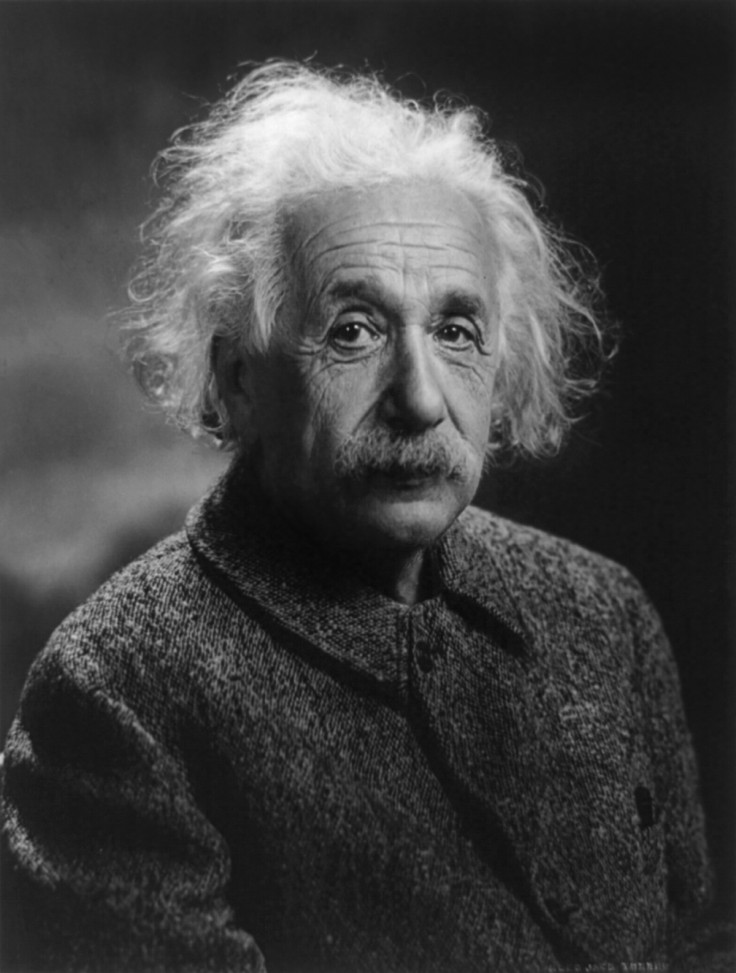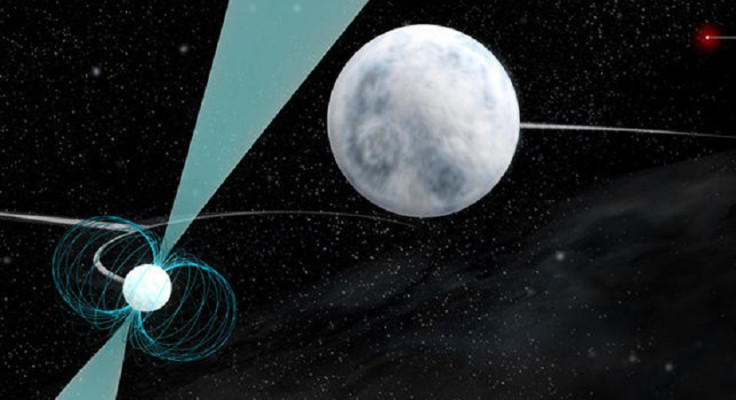New Star System Challenges Einstein's Theory of Relativity

Astronomers have discovered a star system that could challenge Einstein's theory of general relativity and give clues to the real nature of gravity.
The three-star system involves two white dwarf stars and a super-dense pulsar, all of which are packed within a space smaller than Earth's orbit around the sun.
Published in the journal Nature, the findings of the international team looked at a pulsar - a highly magnetised, rotating neutron star - located 4,200 light years from Earth that spins at 366 times per second.
The pulsar was also found to be in close orbit to a white dwarf star. Both were in orbit with another, more distant, white dwarf.
The experts said that the formation allowed them to test Einstein's theory that the effect of gravity on the body did not depend on the nature or internal structure of it.
Scott Ransom, from the National Radio Astronomy Observatory, explained: "This is the first millisecond pulsar found in such a system, and we immediately recognised that it provides us a tremendous opportunity to study the effects and nature of gravity.
"This triple system gives us a natural cosmic laboratory far better than anything found before for learning exactly how such three-body systems work and potentially for detecting problems with General Relativity that physicists expect to see under extreme conditions.
"This is a fascinating system in many ways,including what must have been a completely crazy formation history, and we have much work to do to fully understand it."

When a massive star explodes as a supernova it collapses into a superdense neutron star and some of its mass is converted into gravitational binding energy that holds the star together.
Einstein's strong equivalence theory would suggest that this binding energy will react gravitationally as if it was mass, but all alternatives to the theory of relativity assume it will not.
Under strong equivalence, gravity on the outer white dwarf would be identical for both the inner white dwarf and pulsar. If this theory is invalid under these conditions, the outer star's gravitational effect on the inner white star and pulsar would be slightly different.
Ingrid Stairs, one of the authors of the paper from the University of British Columbia, said: "By doing very high-precision timing of the pulses coming from the pulsar, we can test for such a deviation from the strong equivalence principle at a sensitivity several orders of magnitude greater than ever before available.
"Finding a deviation from the strong equivalence principle would indicate a breakdown of General Relativity and would point us toward a new, revised theory of gravity."
Anne Archibald, from the Netherlands Institute for Radio Astronomy and study co-author, said they will now work to build a computer simulation to work out any gravitational differences.
"We have made some of the most accurate measurements of masses in astrophysics. Some of our measurements of the relative positions of the stars in the system are accurate to hundreds of meters."
© Copyright IBTimes 2024. All rights reserved.







